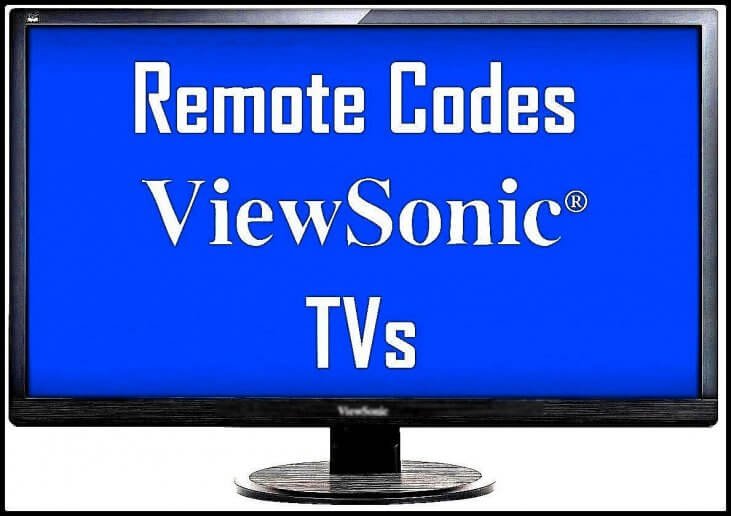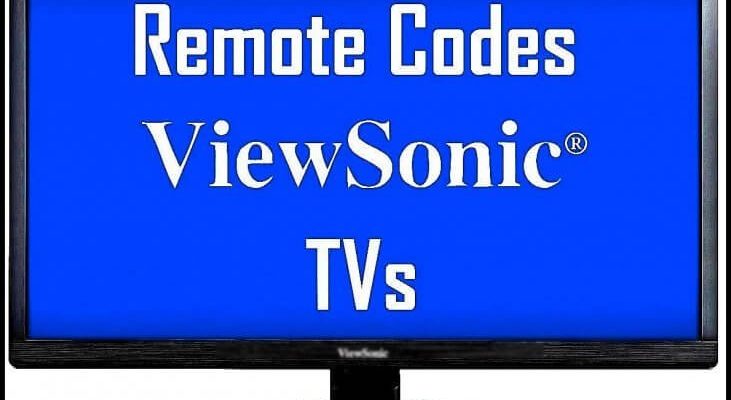
Let me tell you — you’re not the only one pondering this. With so many brands and so much tech crammed into our living rooms, it’s honestly a little wild that a simple question like, “Does my Viewsonic projector remote work with smart TVs?” needs such detective work. Grab your coffee, and let’s unravel how these remotes function, whether they can sync with your smart TV, and what options you actually have. Because life is too short to keep track of five different remotes (and their batteries).
How Viewsonic Projector Remotes Are Designed
Before we start pressing random buttons, it helps to get familiar with how Viewsonic projector remotes actually work. These remotes are made specifically for Viewsonic projectors, and they use either infrared (IR) signals or, in rare cases, radio frequency (RF) signals to communicate with the main device. Basically, when you hit “Power” or “Menu,” the remote beams out a silent code – kind of like a secret language only your projector (and not most other devices) understands.
You might notice that the remote itself is pretty streamlined. Most Viewsonic projector remotes have buttons for power, input source, volume, navigation, and maybe a handful of extras (like adjusting the projector’s settings). There’s usually no “smart” functionality, so don’t expect voice assistants, app shortcuts, or universal coding features.
Here’s the thing: these remotes are handy within the Viewsonic ecosystem but are usually *not* designed to be cross-compatible with other brands or devices, especially complex ones like smart TVs. The coding inside (literally the chip and the “language” it speaks) is tailored for projectors. And unlike universal remotes, there’s no database inside for syncing or pairing with a bunch of other brands’ gadgets.
Why Smart TVs and Projectors Use Different Remote Protocols
You might be thinking, “A remote’s just a remote, right? Why make things complicated?” Well, it turns out, it’s all about the *protocol* — basically, what language the remote speaks to its device. Smart TVs, especially modern ones from brands like Samsung, LG, Sony, or even Roku or Fire TV, use their own command sets. Some remotes even connect via Bluetooth or Wi-Fi, which is a world apart from basic IR.
Most Viewsonic projector remotes use simple IR codes that don’t overlap with TV codes. So, if you point your Viewsonic projector remote at your smart TV and start clicking, you’ll probably get nothing more than a blank stare from your television. No magic there, unfortunately.
And here’s a fun fact: even among projectors, Viewsonic’s remote codes are not always compatible with other projector brands. The idea is to prevent accidental cross-talk between several devices in the same room (imagine triggering your neighbor’s TV during movie night!).
Insight: Unless your smart TV just so happens to use the same IR code library as your Viewsonic projector, you’re pretty much out of luck for direct, out-of-the-box compatibility.
Testing Viewsonic Remote Compatibility With Smart TVs
Alright, so what happens if you just go for it and try to control your smart TV with your Viewsonic projector remote? First, make sure your TV is an IR-compatible model (some new ones primarily use Bluetooth). Point the remote directly at the TV’s IR receiver (usually a small black window at the bottom front), and push some basic buttons like Power, Input, or Volume.
In all honesty, 99% of the time, nothing will happen. Maybe one obscure button might do something, but that’s almost always accidental overlap. Viewsonic’s code library is just too specific to its projectors.
If you want to be thorough, you can try a full battery reset on the remote — pop out the batteries, wait ten seconds, put them back in, and try again. Sometimes if a remote is acting up with its original projector, this “reboot” sorts things out. But for smart TVs? It won’t bridge the compatibility gap. No sync, no pair, no dice.
Common Misconceptions About Universal Remotes
Some folks think all remotes are universal these days. Not quite. Universal remotes are built from the start to support tons of brands and devices. They let you “program” or “pair” with different TV or projector codes by entering them manually or using an automatic search mode. Viewsonic projector remotes don’t have this feature. They’re locked into their own brand language, and there’s no sneaky way to add smart TV codes.
So if you picked up your projector remote hoping to outsmart the system, I hate to be the bearer of bad news: unless you’re using a true universal remote, your chances aren’t good.
How to Tell If a Remote Will Work With Your Smart TV
Sometimes, remote compatibility feels like a game of roulette. Here’s how you can *actually* tell if your Viewsonic remote (or any remote, really) has a shot at working with your smart TV:
- Check the remote’s manual or documentation — Look for any mention of TV compatibility, sync, universal pairing, or code setup. If none of that is in there, it’s a good sign the remote is “projector only.”
- Examine the remote’s layout — Universal remotes often have extra buttons, a “Mode” switch, or a way to enter codes for different devices. Viewsonic remotes keep things simple and usually lack these features.
- Look up your smart TV model online — Some manufacturers list compatible remotes and the specific protocols (IR, Bluetooth, or Wi-Fi). If Viewsonic isn’t on the list, it’s a no-go.
- Try a quick test — Sometimes, in rare cases, there’s random overlap. But don’t expect it. If basic buttons don’t work, that’s your answer.
In most situations, the answer is crystal clear: the Viewsonic projector remote won’t operate smart TVs, no matter how many times you reset or try to pair it.
Alternatives for Controlling Multiple Devices
So, what if you want to keep things simple and avoid a pile of remotes on your coffee table? Here are some real-world options:
- Universal Remotes: These beauties are designed to be programmed for multiple devices — smart TVs, projectors, soundbars, you name it. You’ll need to enter the right code for each brand (a tiny learning curve, but totally doable). They’re life-savers for anyone juggling more than two screens.
- Smartphone Apps: Many smart TVs (and some projectors, but not most Viewsonic models) let you control them via their own mobile apps, which connect using Wi-Fi or Bluetooth. If your devices support this, it’s worth a try. Just search “[Your TV Brand] remote app” in your app store.
- Voice Assistants: Smart home ecosystems like Alexa, Google Assistant, or Apple HomeKit can sometimes control TVs and streaming devices, provided everything is connected to the same network and supports the feature.
Honestly, using a universal remote or a smartphone app is usually the easiest way to get that “one remote” experience. If it’s just between your Viewsonic projector and smart TV, look for a universal remote that lists both devices as compatible.
Troubleshooting Remote Issues: Common Problems and Fixes
Let’s say your Viewsonic remote isn’t working even with your projector — before you give up or buy a replacement, here’s what you can do:
- Battery Check: Weak or dead batteries are the number one culprit. Always try a fresh set. Sometimes a battery reset (removing, waiting, reinserting) helps, especially if the remote’s been glitchy.
- Check the IR Sensor: Make sure nothing is blocking the line between your remote and the device. Infrared signals need a clear path — even a coffee mug in the way can stop the signal.
- Clean the Remote: A sticky or dusty remote can be less responsive. Wipe it down with a dry cloth, especially around the buttons and the IR emitter at the front.
- Reset the Device: Turn off your projector and unplug it for a few minutes before powering back up. Sometimes the remote and projector need a little “reboot” to get back in sync.
But if you’re hoping these tips will help your Viewsonic projector remote “wake up” your smart TV — sorry, no magic trick here. The issue isn’t with the batteries or the code; it’s simply not built to communicate with your TV’s tech.
Pairing and Programming: Why Projector Remotes Don’t “Pair” Like TV Remotes
Pairing a remote usually means syncing it to a device using a special code or through Bluetooth. Most modern smart TV remotes, especially those with fancy voice features, require initial pairing by holding down certain buttons or entering a pairing mode on the TV.
Viewsonic projector remotes almost never have a pairing process. They work out of the box with their intended projector models, using a fixed IR code. There’s no pairing button, and no way to enter custom codes for a different device, like your smart TV.
If you see instructions online about “pairing” a Viewsonic remote, it might be meant for a different kind of remote (like a universal one) or a specific, rare Viewsonic model. But as a general rule, the Viewsonic projector remote doesn’t have a pairing feature that would make it compatible with your smart TV.
Do Any Projector Remotes Work With TVs?
Now, you might be thinking, “Is this just a Viewsonic thing, or are all projector remotes this ‘single-purpose’?” In reality, most projector remotes — regardless of brand — are just like Viewsonic’s: designed for their own devices and not built for universal use. Some third-party, off-brand projectors may use super-basic IR codes that overlap with older TV models, but this kind of accidental compatibility is the exception, not the rule.
If you desperately want to control both your projector and your smart TV with one device, a universal remote is almost always going to be the answer. Look for “code lists” that specifically mention both your TV’s brand *and* Viewsonic projectors. It’s the closest you’ll get to having one remote to rule them all.
Pro tip: Don’t fall for cheap knock-off “universal” remotes on shopping sites. Always check reviews and compatibility lists first, or you might end up with a remote that can’t properly sync, code, or pair with any of your gear.
Final Thoughts: Making Sense of Remotes in a Multi-Device World
Sometimes it feels like home entertainment is getting smarter but also just a bit more complicated, especially when every device seems to need its own remote. When it comes to Viewsonic projector remotes and smart TVs, the reality is clear: these remotes don’t natively work with TVs, and there’s no secret code or reset trick to make them suddenly compatible. They’re designed to do one job, and they do it well — but only with Viewsonic projectors.
If you’re sick of the remote shuffle, your best bet is to look at universal remotes or smart apps that promise true cross-device control. Technology should make our lives easier, not add more confusion. Here’s hoping the future brings a little more harmony (and maybe a little less battery swapping) to our living rooms. Until then, at least you’ll know exactly which remote does what, and why — and that’s a win in itself.
